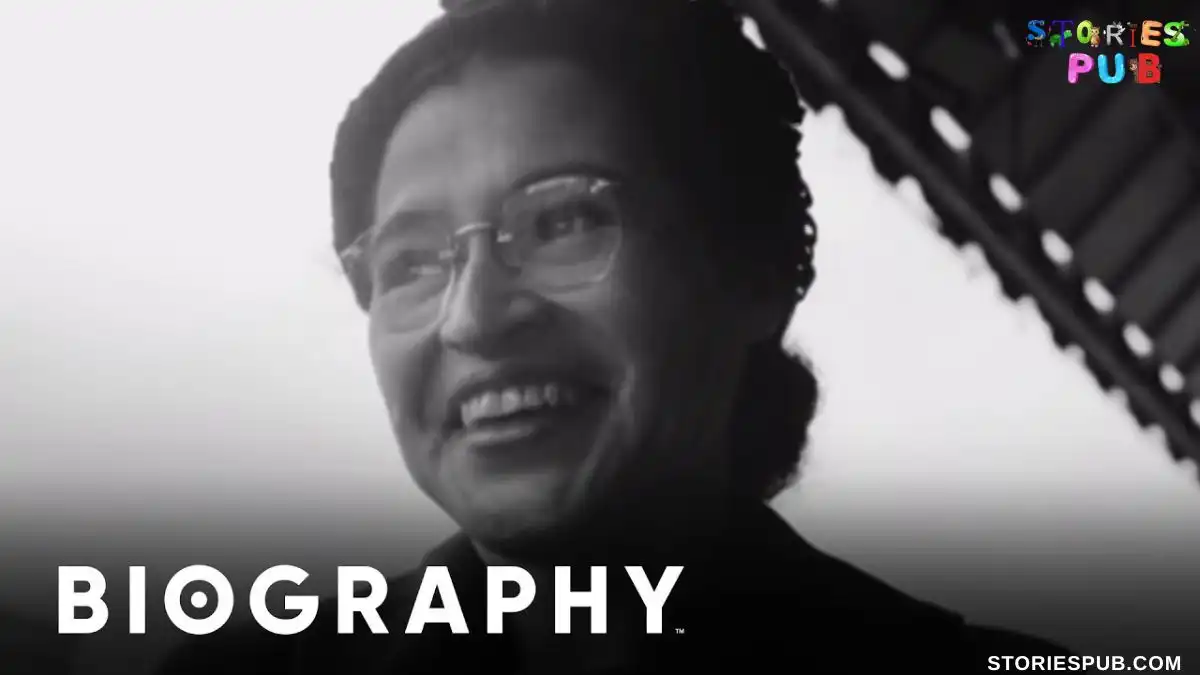Emily Dickinson Biography: Exploring the Enigmatic Poet

In the vast landscape of American literature, the enigmatic figure of Emily Dickinson emerges as a captivating beacon, casting an enduring spell through her timeless poetry. Her exceptional biography not only chronicles her life’s journey but also unveils the potent interplay of creativity and introspection that marked her path as a remarkable poet. This article delves deep into the life and legacy of Emily Dickinson, unraveling the layers of her poetic brilliance while peering into the shadows that surround her existence.
Emily Dickinson’s life story is a testament to the profound influence of an unbridled imagination and the audacity to challenge societal norms. In the following pages, we embark on a journey through the intricacies of her biography, tracing the contours of her poetic prowess, and illuminating the secrets that echo through her eloquent verses.
As we traverse the chapters of her life, we’ll uncover the roots of her poetic genius and delve into the cocoon of seclusion she spun around herself. Through innovative literary expression, she painted emotions with words and wove her narratives with dashes and ellipses, creating a unique tapestry of thought that continues to captivate literary enthusiasts.
In the course of this exploration, we’ll encounter the triumphs and tribulations that shaped her path, confronting the mysteries of her health and the decisions that set her apart from societal conventions. Beyond her poetry, Emily Dickinson’s life radiates with intriguing details – her fascination with the natural world, her empathetic gestures, and the friendships that enriched her existence.
As we peel back the layers of time, one thing remains certain: Emily Dickinson’s legacy shines as a beacon of literary innovation and individuality. Join us as we navigate the intricate corridors of her biography, unravel the threads of her poetic tapestry, and pay homage to the luminous legacy of this enigmatic poet.
Personal Details
| Category | Details |
| Birth Date | December 10, 1830 |
| Birthplace | Amherst, Massachusetts, United States |
| Family Background | Close-knit family, strong bond with father and siblings |
| Personality | Introverted, reclusive |
| Hobbies | Botany, baking treats for local children |
| Friendships | Close friendship with Thomas Wentworth Higginson |
| Health Challenges | Speculated physical and mental health issues |
Professional Details
| Category | Details |
| Occupation | Poet |
| Notable Works | Nearly 1,800 poems, many unpublished |
| Literary Style | Unconventional punctuation, introspective themes |
| Literary Legacy | Influential in American literature, unique approach to poetry |
| Impact | Inspired generations of poets and writers |
| Recognition | Gained posthumous recognition for her contributions to poetry |
Early Life and Family Background
Amherst, Massachusetts, birthed a literary luminary whose family background proved to be the crucible of her poetic brilliance – Emily Dickinson. In this serene New England town, Emily’s life unfolded against the backdrop of a closely-knit family, where the seeds of her extraordinary talents were sown.
Central to Emily’s formative years was her father, Edward Dickinson, a prominent lawyer and respected community figure. His deep reverence for learning and literature cast an indelible imprint on Emily’s intellectual inclinations. The Dickinson household was a haven of intellectual exploration, fueled by her father’s extensive library that granted her unfettered access to a trove of books. This early exposure broadened her horizons and honed her innate affinity for language.
Yet, Emily’s familial bonds extended beyond her father. Her relationship with her siblings, Austin and Lavinia, mirrored the tapestry of camaraderie and individuality. Together, they shared lively discussions and embraced creative pursuits, fostering an environment where intellectual curiosity thrived. This nurturing atmosphere allowed Emily’s passion for writing to flourish, as she began penning letters and verses marked by keen observations of life’s nuances.
Amid the tranquil setting of Amherst, Emily’s affinity for nature and the world around her found a canvas in her father’s garden and the surrounding landscapes. Her introspective nature was further shaped by her family’s influence and her own explorations into the realms of philosophy and literature. As her affinity for the written word grew, she honed her unique voice that would later become the hallmark of her poetry.
In the familial cocoon of the Dickinson home, Emily’s early love for reading and writing was nurtured, setting her on a trajectory that would define American poetry. The bonds formed in these formative years illuminated the path toward her groundbreaking literary contributions, and the intricate tapestry of her early life continues to offer insight into the enigmatic genius that is Emily Dickinson.
A Life of Seclusion and Contemplation
In the midst of a bustling world, Emily Dickinson’s path diverged from the ordinary, leading her toward a life marked by quiet contemplation. Her retreat from the public eye wasn’t a mere eccentricity but a conscious decision driven by an innate desire for solitude, an environment where her creativity could thrive undisturbed. This deliberate choice unveiled a profound aspect of her character that would shape her poetic legacy.
Emily’s inclination toward solitude was not an attempt to escape reality; rather, it was a strategic retreat into a world of her own making. Her reclusive lifestyle unfolded within the confines of her family’s homestead in Amherst, where she lived for the majority of her life. Within these walls, Emily found solace and space to engage in deep introspection, allowing her thoughts to flow freely and unfiltered onto paper.
This seclusion enabled Emily to cultivate a unique perspective on the world around her. While her contemporaries were immersed in the external clamor, she turned inward, diving into the depths of her thoughts, emotions, and observations. Through this process, she unearthed a rich reservoir of insights that found expression in her poetry, transforming her quiet existence into a wellspring of profound literary creation.
Within her self-imposed seclusion, Emily’s creativity flourished, and her verses became vehicles of exploration into the human psyche and the intricacies of existence. Her poems explored themes ranging from love and death to nature and spirituality, often delving into the enigmatic aspects of life that elude conventional understanding. By embracing solitude, she gave herself the freedom to explore the farthest reaches of her imagination, unencumbered by societal expectations or external pressures.
Emily Dickinson’s life of contemplation and seclusion wasn’t a retreat from the world but a chosen path toward self-discovery and creative revelation. Her introspective nature allowed her to harness the power of solitude to create a body of work that continues to resonate with readers across time and space, a testament to the profound depth of her inner world.
Innovative Literary Expression
Emily Dickinson’s literary legacy extends beyond her words; it encompasses a distinctive and unconventional style that revolutionized poetry. Her mastery of linguistic nuances—punctuation, dashes, and ellipses—allowed her to craft poems that transcended traditional boundaries and captivated readers with their brevity and evocativeness. This innovative approach to literary expression became a hallmark of her work, leaving an indelible mark on the world of poetry.
Emily’s use of punctuation was not a mere adherence to grammatical rules but a deliberate artistic choice. The dashes, often used in place of traditional punctuation, served as portals into the inner workings of her mind. They created pauses, suspensions, and shifts that mirrored the ebb and flow of her thoughts, inviting readers to experience the rhythm of her consciousness. The ellipses, on the other hand, hinted at the vast expanse of the unspoken, leaving spaces for interpretation and contemplation.
Through these unconventional techniques, Emily Dickinson achieved a remarkable feat—capturing the fleeting and the profound within the confines of a few lines. Her poems resembled snapshots of thought, frozen in time yet pulsating with life. This brevity allowed her to distill complex emotions, observations, and reflections into concise verses that carried immense emotional weight.
Central to her poetic exploration were themes that resonated deeply with her introspective nature. Mortality, often contemplated through the lens of death and immortality, found its place in her verses. Nature, a source of solace and wonder, became a canvas upon which she painted her musings. The human psyche, with its myriad emotions and contradictions, was dissected with both precision and empathy.
Emily Dickinson’s innovative literary expression was not a mere stylistic choice; it was an embodiment of her inner world, a reflection of her unique way of experiencing and interpreting life. By defying conventions, she invited readers to engage with her poetry on a profound level, to journey into the uncharted territories of human thought and feeling. Her unconventional approach not only enriched the literary landscape but also challenged the boundaries of artistic expression, leaving an enduring legacy that continues to inspire writers and poets to this day.
Challenges and Triumphs
The life of Emily Dickinson was not without its share of challenges, and her journey was marked by both personal struggles and remarkable triumphs. While her poetic brilliance illuminated the literary world, her health challenges cast a shadow over her existence, contributing to the enigmatic aura that surrounds her.
Speculation has persisted regarding the nature of Emily Dickinson’s ailments. Some historians and scholars have proposed that she battled physical illnesses that confined her to the seclusion of her home, while others suggest that her struggles encompassed mental health issues that influenced her reclusive lifestyle. The exact nature of her health challenges remains a subject of debate and intrigue, adding layers of complexity to her narrative.
Despite these challenges, Emily’s creative spirit remained unyielding. The very solitude that enveloped her existence also provided the space for her to channel her innermost thoughts, emotions, and observations into her poetry. Her room became a sanctuary, and her pen a conduit through which she navigated the depths of her own psyche and the world around her. The act of writing became a means of transcending the confines of her physical reality, allowing her to explore boundless realms of imagination.
In this solitude, Emily Dickinson’s poetic voice flourished. She transformed her challenges into triumphs by crafting verses that captured the human experience with profound insight and sensitivity. Through her words, she grappled with existential questions, contemplated the mysteries of life and death, and examined the intricacies of the human heart. Her poetry became a sanctuary of its own, a testament to her resilience and her determination to transform adversity into art.
Emily’s ability to create enduring poetry despite her challenges serves as a testament to her indomitable spirit and unwavering dedication to her craft. Her works, steeped in introspection and woven with linguistic artistry, continue to captivate readers across the ages. The challenges she faced only underscore the depth of her brilliance, as she turned the fragments of her own experiences into verses that resonate with universal truths.
In conquering her personal struggles through her creative expression, Emily Dickinson emerged as a beacon of inspiration—a reminder that even in the face of adversity, the human spirit can soar to artistic heights that leave an indelible mark on the world.
Exploring Emily Dickinson’s World
Beneath the surface of her renowned poetry, Emily Dickinson’s life was rich with intriguing facets that offered glimpses into her multifaceted personality. Amidst her literary pursuits and seclusion, she cultivated a deep affinity for the natural world—a connection that often found expression through her fascination with botany.
Her study of plants and flowers not only reflected her keen observation skills but also served as a source of solace and inspiration. In the intricate petals and delicate leaves, she discovered a realm of beauty and wonder that resonated with her poetic spirit.
In the quiet corners of her home, Emily Dickinson nurtured a habit that reflected her compassionate nature. She was known to bake delectable treats, which she would then distribute to the children in her neighborhood.
This simple act of generosity illustrated her desire to spread joy and kindness to those around her, even as she maintained her reclusive lifestyle. Through these small gestures, Emily showed that her heart extended beyond the confines of her solitude, reaching out to touch the lives of others in ways that were both tender and meaningful.
Another facet of Emily’s life that adds to her mystique was her friendship with Thomas Wentworth Higginson. Higginson, a writer, social activist, and literary critic, played a significant role in Emily’s life as a mentor and correspondent. Their letters offer glimpses into her thoughts, aspirations, and views on various subjects. Their friendship provides a window into the personal interactions that shaped her worldview and creative pursuits.
These lesser-known aspects of Emily Dickinson’s life humanize the enigmatic poet, revealing layers of complexity and depth beneath the surface of her reclusive existence. Her connection to the natural world, her acts of kindness, and her meaningful friendships all contribute to a more comprehensive understanding of the woman behind the verses. Emily’s life becomes a tapestry woven from creativity, empathy, and the quiet moments of beauty and connection that adorned her world.
Legacy of Introspection
Emily Dickinson’s deliberate choice to remain unmarried offered her a unique opportunity—to embark on a lifelong journey of self-discovery and contemplation. Freed from the conventional roles and responsibilities of marriage, she could delve into the recesses of her own mind, exploring the intricate landscapes of thought, emotion, and imagination. This freedom from societal expectations allowed her to cultivate an extraordinary depth of introspection that found its most profound expression in her poetry.
Emily’s verses, like windows into her soul, traverse the labyrinthine corridors of human experience. With an unparalleled gift for distilling complex emotions into concise yet powerful lines, she beckons readers to navigate the terrains of love, despair, hope, and longing. Her words are mirrors that reflect the complexity of our inner lives, inviting us to confront our vulnerabilities, fears, and aspirations with unflinching honesty.
Beyond her lifetime, Emily’s legacy reverberates through the ages, leaving an indelible mark on the world of literature. Her innovative use of language, punctuated by dashes and unconventional syntax, challenges readers to embrace the spaces between words, mirroring the gaps in our understanding of life’s mysteries. Poets, writers, and thinkers continue to draw inspiration from her introspective approach, finding solace and illumination in her unique ability to encapsulate the ineffable.
Emily Dickinson’s legacy transcends the boundaries of time and place. Her legacy is not just in the words she left behind, but in the spirit of inquiry and reflection that she ignited. Her life’s work serves as an enduring reminder that true understanding often lies not in the grandiose, but in the quiet contemplation of the self and the world—a legacy that encourages us to explore the depths of our own consciousness and embrace the enigmatic beauty of existence
Important Points
| Renowned American poet |
| Born on December 10, 1830, in Amherst, MA |
| Introverted and reclusive lifestyle |
| Unconventional use of punctuation and syntax |
| Wrote nearly 1,800 poems, most unpublished |
| Themes of mortality, nature, and human psyche |
| Close relationship with family and siblings |
| Deep fascination with botany and nature |
| Close friendship with Thomas Wentworth Higginson |
| Health challenges and speculated illnesses |
| Left behind a legacy of introspection and insight |
Conclusion
Emily Dickinson’s biography opens a window into the captivating world of a literary luminary whose introspection and innovative poetic style continue to captivate readers across the ages. Her unique ability to distill complex emotions and thoughts into succinct yet profound verses showcases the transformative potential of self-expression through the written word. As we unravel the threads of her life’s narrative, we find ourselves drawn into a realm of contemplation, where the exploration of existence becomes an art form.
The legacy of Emily Dickinson is not merely confined to her time; it reverberates through the corridors of literary history, inspiring poets, thinkers, and dreamers to embrace the uncharted territories of their own minds. Her unconventional use of punctuation and syntax mirrors the pauses and ponderings of our own inner dialogues, inviting us to explore the intricacies of our thoughts and emotions.
In the tapestry of her life, Emily Dickinson stands as a testament to the power of individuality and self-discovery. Her choice to remain unmarried allowed her the freedom to pursue a lifelong odyssey of introspection, resulting in a body of work that continues to evoke profound reflections on the human experience.
As we bid adieu to her story, we carry with us the echoes of her poetic musings—a reminder that self-expression, no matter how unconventional, has the ability to touch the hearts and minds of generations.
Emily Dickinson’s biography is a chronicle of the extraordinary—a reminder that within the realm of the ordinary, there lies a vast expanse of thought, feeling, and imagination waiting to be explored. Through her verses, she extends an invitation to all to embark on their own introspective journeys, where words become mirrors reflecting the beauty and complexity of life itself.
Hey kids, how much did you like Emily Dickinson Biography: Exploring the Enigmatic Poet? Please share your view in the comment box. Also, please share this story with your friends on social media so they can also enjoy it, and for more such biography, please bookmark storiespub.com.
Suggested Biography –
Emily Dickinson FAQs
Who was Emily Dickinson?
Emily Dickinson was a renowned American poet known for her unique style, introspective themes, and unconventional use of punctuation. She was born on December 10, 1830, in Amherst, Massachusetts.
How many poems did Emily Dickinson write?
Emily Dickinson wrote nearly 1,800 poems. Many of her poems were unpublished during her lifetime and were discovered after her death.
What is Emily Dickinson's writing style?
Emily Dickinson's writing style is characterized by her unconventional use of punctuation, dashes, and ellipses. She employed these linguistic nuances to capture profound sentiments in a condensed yet evocative manner.
Was Emily Dickinson a recluse?
Yes, Emily Dickinson was known for her reclusive and introverted lifestyle. She chose a life of quiet contemplation, which allowed her creativity to flourish.
What were Emily Dickinson's main themes in her poetry?
Emily Dickinson's poetry explored themes of mortality, nature, human psyche, and introspection. Her works often delved into the complexities of human emotions and the mysteries of existence.
Did Emily Dickinson ever marry?
No, Emily Dickinson never married. Her decision not to marry allowed her the freedom to focus on her writing and introspective exploration.
What is Emily Dickinson's legacy?
Emily Dickinson's legacy includes her significant influence on American literature. Her unique approach to poetry and her exploration of the human experience continue to inspire generations of poets and writers.
How did Emily Dickinson's poems become known to the public?
After Emily Dickinson's death, her poems were discovered by her sister and later published by editors. Her unique and introspective poems gained recognition posthumously.
What was Emily Dickinson's relationship with her family?
Emily Dickinson shared a close bond with her father and siblings. Her family nurtured her intellectual curiosity and early love for reading and writing.
How does Emily Dickinson's work resonate today?
Emily Dickinson's work remains relevant today due to its timeless themes, innovative style, and profound insights into the human experience. Her poems continue to captivate readers and influence modern literature.







